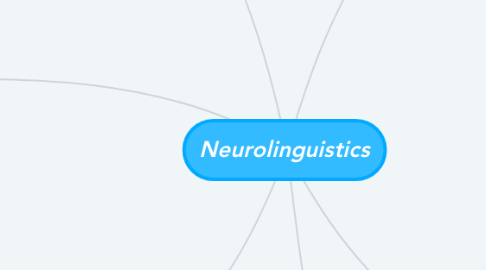
1. Neurons (86-87 billion)
1.1. Structure
1.1.1. Dendrites (Multiple; “branches” that receive information)
1.1.2. Axon (One for cell; send information)
1.1.3. Myelin Sheath
1.2. Connection between neurons
1.2.1. Synaptical Cleft
1.2.2. Types of connections
1.2.2.1. Excitatory (Neurotransmitter: Glutamate)
1.2.2.2. Inhibitory (Neurotransmitter: GABA)
1.3. Cortical Columns
1.3.1. Minicolumns
1.3.2. Maxicolumns
2. Neuroevolution
2.1. Encephalization quotient
2.1.1. Correlation of V (brain) and weight
2.1.2. Thickness of Neocortex
2.1.3. Size of the frontal lobe
2.1.4. Energetic cost per gramm
3. Language acquisition
3.1. The critical thinking period
4. The Brain
4.1. Basic Language Areas
4.1.1. Broca`s Area (speech)
4.1.2. Wernicke`s Area (speech perception)
4.2. 4 Lobes
4.2.1. Frontal (logic of speech, motiv.)
4.2.2. Parietal (proc. tactile inf)
4.2.3. Occipital (perc. of audio inf.)
4.2.4. Temporal (proc. of auditory inf. +inf. from hypothal-s)
4.3. Parts and Str-re
4.3.1. Medulla Oblongata (pain and sensation)
4.3.2. Pons and Cerebellum
4.3.3. Midbrain
4.3.4. Thalamus ( sensory inf.) and Hypothalamus (memory)
4.3.5. Cerebral Hemispheres (Left - lang; Right - non-verbal)
4.4. Central sulcus and Sylvian fissure.
4.5. Cortex
4.5.1. Grey Matter (columns of neurons)
4.5.2. White Matter (inter-column connections)
4.5.3. Hierarchy in the Cortex
4.5.3.1. Top (Independent proc. of inf. -- planning, prediction, solv.)
4.5.3.2. Middle (High motility)
4.5.3.3. Bottom ( Visual + auditory mot)
5. Genes and Language
5.1. FOXP2
6. Language disorders
6.1. Aphasia
6.1.1. Broca`s Aphasia
6.1.2. Wernicke`s Aphasia
6.1.3. Conductive Aphasia
